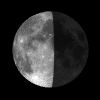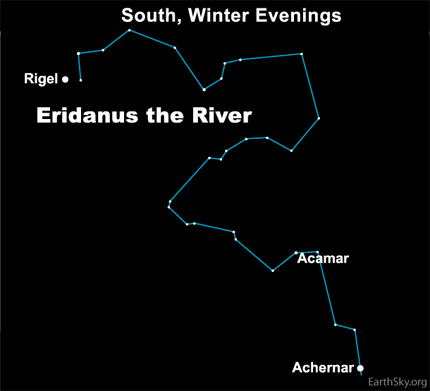Courtesy of EarthSky
A Clear Voice for Science
Visit EarthSky at
www.EarthSky.org

 Today’s chart is almost just like the January 23 chart, but today we have changed our observing location. Normally, our charts are set for the geographical center of the continental U.S. – say, somewhere in Kansas. Today’s chart is set to the extreme southern U.S.
Today’s chart is almost just like the January 23 chart, but today we have changed our observing location. Normally, our charts are set for the geographical center of the continental U.S. – say, somewhere in Kansas. Today’s chart is set to the extreme southern U.S.
It is as if we are gazing at stars from the southernmost part of the country . . . maybe along the Texas/Mexico border, or from the Florida Keys. From most of the U.S., the bottom part of constellation Eridanus the River disappears below the southern horizon. It is only if you are in the extreme southern U.S., or farther south on Earth’s globe, that you can see the famous star that marks the end of the River. This River is the constellation Eridanus. The star is Achernar.
The star marking the end of the River is very bright. However, bright or not, you will never see it anywhere but right next to the southern horizon if you’re observing from the U.S. You will not see it at all from the northern states. That is because this star is located very far to the south on the celestial sphere, the imaginary dome of stars surrounding Earth.
Large Magellanic Cloud: spectacular from Earth’s southern hemisphere
Achernar makes only a tiny arc above the southern horizon from the southern U.S., so you have to be looking at just the right time to see it – for example, at nightfall and early evening tonight. Achernar – if you see it, you will never forget it!
Achernar’s rising and setting time in your sky
Written by Deborah Byrd![]()
Astronomy Picture of the Day from NASA/JPL
U.S. Naval Observator Astronomical Information center
The York County Astronomical Society
 Print This Post
Print This Post








